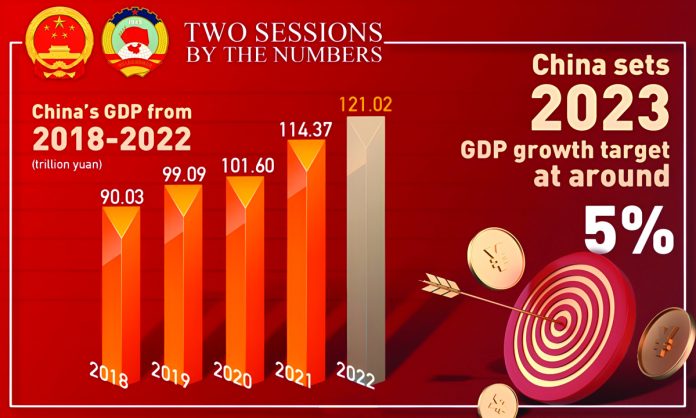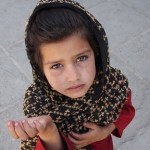Sanaullah Bhatti
The United States and Russia agreed to explore the economic and investment opportunities that could arise for both countries from an end to the war in Ukraine, following discussions at the Diriya Palace in Riyadh. This meeting marked a significant shift in Washington’s approach to Moscow. The statement was issued on March 18, after an agreement between Russia and the United States for a ceasefire in the Russo-Ukrainian War. Notably, this is the first time since World War II that an Asian country has been selected to facilitate US-Russia peace talks. Surprisingly, Europe and Ukraine have been excluded from these discussions, which aim to establish principles for a ceasefire in Ukraine.
Apart from this remarkable development in the US-Russia peace talks, the choice of a Middle Eastern country for peace talks between two great powers highlights the significance of the Asian theater in future global strategic affairs. Over the last two decades, the world has witnessed an efficient shift in power dynamics and strategic relevance from Europe to Asia, largely driven by rapid economic growth, military modernization, geopolitical alignments, restructuring of organizational roles, and political rationalization.
China has virtually taken over large-scale industrialization and an export-led strategy, growing its GDP from $1.2 trillion in 2000 to $17.79 trillion in 2023. India has seized the services sector, particularly in information technology and business process outsourcing. The country’s GDP has grown from $477 billion in 2000 to $3.57 trillion in 2023. Military modernization in Asia has undergone significant transformations over the last two decades, with implications for regional security dynamics and potential flashpoints, including the South China Sea, the Korean Peninsula, and the Pacific Ocean.
This security threat has been exacerbated by the United States’ involvement in its informal strategic alliance with Japan, India, and Australia in the Quadrilateral Security Dialogue (QUAD), which aims to counter China’s growing military presence in the Pacific and Indian Oceans. China’s military modernization is primarily focused on developing advanced military capabilities, while India prioritizes modernizing its military by increasing its naval and air capabilities. Japan, Korea, and Southeast Asian countries are also growing their military capabilities in response to the threat from North Korea and China’s expansionist objectives in the region.
The landscapes of power and security dynamics in Asia are being reshaped by interplays of strategic and economic realignments of regional perspectives. In 2011, the United States announced the US Pivot to Asia Project, reflecting a shift from Europe to Asia in strategic, political, and economic balancing. China launched the Belt and Road Initiative in 2013, a massive infrastructure development project aimed at connecting Asia with Europe and Africa. India reinstated its Act East project in 2014 to widen its relations with Southeast Asian countries. India now launches India-Middle East-Europe Economic Corridor (IMEC) via sea and land routes.
All these massive projects require an inclusive correlation of their beneficiaries with effective intervention in the reorganization of security and strategic realms to serve their interests. These tendencies herald a profound consideration for all countries striving for political continuity, economic stability, and security resilience in regional relevance. This phase in world politics marks a realignment of strategic alliances with clear objectives. Consequently, every nation must remain relevant to secure its interests and opportunities.
Following the rapid change in the Asian part of the world, the Gulf region has set itself a role as an enlightened, progressive, peaceful, and modernized political entity, exercising its influence in the normalization of conflicts for peace. The United Arab Emirates has emerged as a pioneer in promoting tourism and modernization in the Gulf countries. By investing heavily in sectors like finance, tourism, renewable energy, and technology, the UAE has inspired other regional entities to adopt a diversified economy and become a global business and tourism hub over the last two decades. In the post-COVID-19 era, Southeast Asian countries have shown resilience in the face of global economic uncertainty, with most countries maintaining stable growth momentum.
In a nutshell, present developments are painting a picture in which Arabs are moving towards liberalization of the socio-economic sphere to achieve modernity in their political approach. India is thriving as the largest democratic entity, acquiring strategic and economic capabilities to counterbalance Chinese influence in the region. Meanwhile, China is expanding its influence over the Pacific and Asia, seeking to maximize its sphere of influence.
Pakistan is a natural bridge between the Eurasian heartland and the Arabian Sea, offering critical overland connectivity for trade and energy transactions. It is actively engaging its economic, strategic, and cultural ties with regional entities to capitalize on its geographic significance. In this regard, Pakistan has documented several trade and investment agreements, mainly related to mega energy projects, with China, Iran, and Central Asian countries.
Three grand projects the Turkmenistan-Afghanistan-Pakistan-India gas pipeline (TAPI), the Iran-Pakistan gas pipeline, and the China-Pakistan Economic Corridor (CPEC) are underway, showcasing Pakistan’s potential as a prime choice for regional connectivity. This attribute of regional connectivity is significantly characterized with long term strategic partnership with neighboring countries to pursue a permanent framework of structural guarantee. However, over the last two decades, Pakistan has been entangled in the vortex of terrorism, with various groups operating within its borders and across borders. Terrorism is a complex issue with multiple causes and factors contributing to its persistence.
Pakistan’s involvement in the Soviet-Afghan War and the War on Terrorism led to an influx of militant groups, sectarianism, radicalization, and vulnerability of defense peripheries. This catastrophic phase severely eroded the country’s socio-political institutional framework and eclipsed opportunities to benefit from rapid economic growth, as seen in other parts of Asia, where peace and consistency prevailed during this period.
To reclaim its position in the rapidly shifting Asian landscape, Pakistan must adopt a two-pronged approach, focusing on achieving political stability and driving economic modernization. By capitalizing on its strategic location, Pakistan can establish itself as a critical node in regional connectivity, fostering economic expansion and stability. Pakistan can draw inspiration from the success stories of its Asian counterparts, such as Gulf and Southeast Asian countries, which have effectively harnessed their strategic locations, invested in infrastructure development, and cultivated regional connectivity to propel economic growth and stability.
By emulating these examples and leveraging its own strategic partnerships with regional players, including China, Iran, and Central Asian nations, Pakistan can unlock its full potential and reassert its influence in the Asian region. Ultimately, Pakistan’s future in Asia hinges on its ability to prioritize political stability, drive economic modernization, and capitalize on its strategic location to become a hub of regional connectivity.
The author is a freelance Researcher and a graduate of International Relations, University of Karachi.







